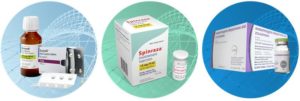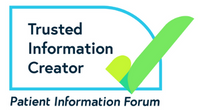Drug Treatments for Children who have 5q SMA

Drug Treatments for Children who have 5q SMA
You can:
- Download a printed pdf version of this information here >
- Ask us to send you a printed version: publications order form >
This page provides short answers to the common questions families have about the three NHS-funded drug treatments. We use the names of the treatments that are most commonly used by the SMA community:
- Spinraza (Nusinersen)
- Zolgensma (Onasemnogene abeparvovec)
- Risdiplam (Evrysdi)

Decisions about treatment can be complex.
Each child and family’s situation and circumstances are different.
We recommend you discuss any unanswered questions with your child’s clinical team.
Your questions answered
Children who have been diagnosed with SMA Type 1
If they are well enough, these children may be able to have any one of the three treatments.
Zolgensma
Children must weigh less than 21 kg. As risks increase with weight, children over 13.5 kgs should only be treated in specific circumstances. All children must also have a number of blood tests to make sure it is safe for them to have this treatment. These include how well their liver, kidney and heart are working. They also must have an AAV9 antibody test (see ‘How do the treatments work’ below)
Children who have been diagnosed with SMA Type 2 or 3
If they are well enough, these children may be able to have Spinraza or Risdiplam.
These babies may be identified in one of two ways:
- If the parents already have a child who has SMA – during the pregnancy or at birth
- They have been part of the Generation Research Study >
Babies who have between 1 and 3 copies of the SMN2 gene
These children may be able to have any one of the three treatments. A number of blood tests have to be done to make sure it is safe for them to have Zolgensma. These include how well their liver, kidney and heart are working. They also must have an AAV9 antibody test (see ‘How do the treatments work’ below).
Babies who have 4 copies of the SMN2 gene
These babies may be able to have Spinraza or Risdiplam.
People with SMA do not have enough of a protein called ‘survival motor neuron’ (SMN) protein. This protein is essential for the function of motor neurons. These are the nerve cells responsible for controlling muscles. Motor neurons are located in the brain and spinal cord. They form connections with muscles to enable movement.
The SMN protein is made in our cells from two genes, SMN1 and SMN2. People who have SMA have:
- two ‘altered’ copies of the SMN1 gene. When they are altered, these genes are unable to produce enough SMN protein to maintain healthy lower motor neurons.
- a variable number of copies of the SMN2 gene. SMN2 is often called the back-up gene. It mostly produces a short SMN protein that does not work as well as a full-length protein.
All three treatments increase the amount of SMN protein found in cells throughout the body. They do this in different ways.
Spinraza
This is a small piece of genetic material (a synthetic antisense oligonucleotide). It targets the ‘back-up’ SMN2 gene. It makes the gene produce more usable full-length SMN protein.
Zolgensma
This is a gene therapy. It delivers a healthy copy of the SMN1 gene to motor neurons. So that the gene can reach the intended cells, it is packaged inside an inactive shell of a virus called AAV9 (adeno-associated virus 9) in order to transport it to the target cells.
Risdiplam
This is a small molecule drug. It targets the ‘back-up’ SMN2 gene. It makes the gene produce more usable, full-length SMN protein.
None of the treatments is a cure. This is because:
- Timing is critical. Treatments can quickly boost SMN protein after they are given. But, by then, some damage may be irreversible. This may happen even before a baby is born.
- It is unknown if the treatments will have lasting effects. They are all so new.
They are often called disease-modifying treatments.
Spinraza
This is given by lumbar puncture >. A needle is inserted through the skin into the space between the back bones of the spine (vertebrae) into the fluid that flows in and around the brain and spinal cord (cerebrospinal fluid -CSF).Doctors usually use a local anaesthetic such as ‘numbing cream’ when they do this. If a sedative or general anaesthetic is needed, the doctor will decide if this is safe for the child or if a different treatment should be considered.
The total length of time the procedure takes will vary. The injection itself takes between one and three minutes.
‘Loading doses’ are given to get the level of the drug to an effective concentration within the CSF. These are:
- On the first day of treatment, day 0
- Then around day 14, day 28 and day 63
- There should always be at least 14 days between doses.
Once the loading doses have all been delivered, there are then maintenance doses every 4 months to maintain the drug concentration level in the CSF.
Zolgensma
This is a single one-time treatment injected into the bloodstream (intravenously). A small flexible tube (cannula) is placed into a vein in the arm or leg using a needle. The needle is then removed leaving the cannula in place for the infusion. Sometimes, for safety reasons, two cannulas are inserted. It takes about 60 minutes to deliver the treatment.
The care and management needed before and after treatment can be very intense. For example:
- Contacts need to be limited to help prevent infections
- A high standard of hand hygiene and careful disposal of nappies is essential for at least a month after the infusion
- Hospital visits and regular blood tests are needed for the first 2 – 3 months after treatment. Blood tests can be as often as twice a week
- To reduce side effects, corticosteroids are given before and after the treatment. This is for at least three months, usually by mouth. After that time, the treating doctor assesses when and how they can be stopped. It is not safe to suddenly stop steroids.
Risdiplam
-
The tablet form
This is possible for children who have:
- SMA Type 1, Type 2 or Type 3 or
- one to four SMN2 copies, who are 2 years of age or older with a body weight of 20 kg (44 lbs) or more.
They must be able to swallow without the use of a feeding tube.
The tablet is taken daily at home at approximately the same time each day. It:
- can either be swallowed whole or dispersed in water
- can be taken with or without food
- does not require refrigeration
- can be stored at room temperature.
The liquid form
This is available for those who are not eligible for the tablet form and those who may prefer the oral solution.
The liquid is taken at home. daily after a meal, at approximately the same time each day. It is given by mouth (orally) or feeding tube, using the syringe that comes with it. It is provided in a bottle in a box that must be kept in the fridge. It comes with instructions about how long it is safe to keep it out of a fridge and what is the allowed maximum temperature.
All three treatments reach the motor neurons to treat SMA.
All three treatments reach other types of cells. The extent of this, and any potential benefits, are unknown.
Spinraza
This reaches the motor neurons and other cell types in the spinal cord. It may have limited ability to reach other parts of the body due to the ‘blood-brain’ barrier.
Zolgensma
This travels through the bloodstream and reaches the brain and motor neurons, delivering SMN protein throughout the body.
Risdiplam
This reaches many different types of cells, tissues and organs in the body.
Your clinical team will discuss the possible risks and benefits of each treatment with you.
You can read more on this topic if you follow the ‘Related Information‘ links on this page. Each treatment also has a detailed Patient Information Leaflet:
Spinraza – Biogen’s Patient Information Leaflet >
Zolgensma – Novartis Gene Therapies’ Patient Information Leaflet >
There are no clinical trials or studies that directly compare the effects of these treatments.
- Spinraza has been tested in clinical trials in humans since 2011.
- Zolgensma has been tested in clinical trials with young children since 2014.
- Risdiplam has been tested in clinical trials in humans since 2015.
In these trials, all three treatments have been consistently shown to have an acceptable safety profile and to be well-tolerated.
When compared to no treatment, all three treatments have led to clinically meaningful improvements in muscle function.
The long-term outcomes and the specific outcomes for any individual child are uncertain.
Your child’s clinical team will know about the clinical trials for each treatment. They will have ‘real world’ information that is being collected and discussed all the time.
In July 2024, we asked the pharmaceutical companies how many people had been treated across the world:
- Biogen told us their latest update was that more than 14,000 people had been treated with Spinraza.
- Roche told us that at the end of March 2024, more than 15,000 people had been treated with Risdiplam.
- Novartis Gene Therapies told us that at the end of June 2024 more than 4,000 patients had been treated with Zolgensma in trials, access programmes and clinical use.
SMA UK’s FlexiGrant 1 > can help with the travel costs of accessing an NHS funded treatment or assessment
 Version 7
Version 7
Author: SMA UK Information Production Team. Reviewed by expert neuromuscular clinicians. Fact checked, but not influenced by the pharmaceutical companies.
Published: July 2025
Review due: October 2026
Links last checked: July 2025
This page, and its links, provide information. This is meant to support, not replace, clinical and professional care.
Find out more about how we produce our information.
